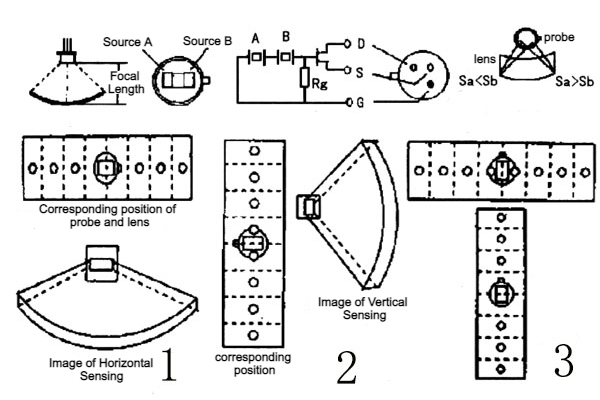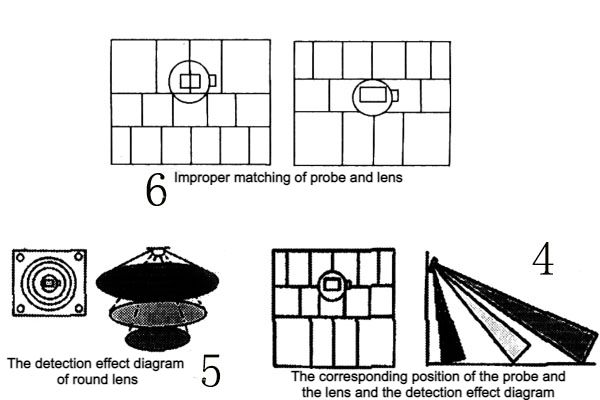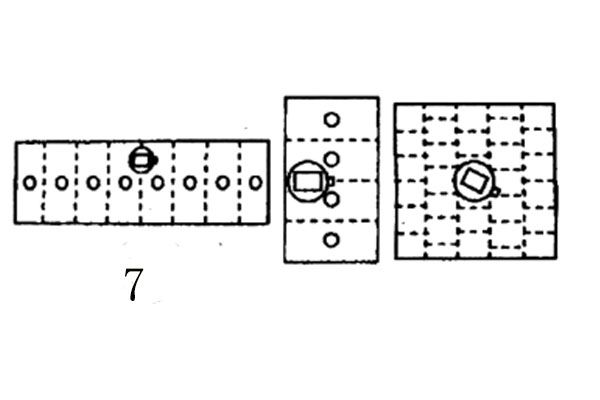Infrared Sensor Lens Sensing Method and Applications
The infrared PIR Fresnel lens sensing method is static, and there is infrared light in the space. Because the dual-element probe adopts complementary technology, no electrical signal output will be generated. Under dynamic conditions, the human body is sensed by element A or element B successively through the sensor, and Sa<Sb or Sa>Sb produces a difference, and the dual elements lose their complementary balance effects and sensitively generate signal output. A person moves in a vertical state towards the probe, and Sa=Sb does not produce a difference, and it is difficult for the dual element to produce a signal output. Therefore, it is advisable to install the detector in parallel with the walking direction of the person. According to the above principle, the combination of the probe and the lens can make the human body detection with the following induction methods
Infrared PIR Fresnel lens Sensing Method
In a static state, there is infrared light in the space. Because the dual-element probe adopts complementary technology, no electrical signal output will be generated. Under dynamic conditions, the human body is sensed by element A or element B successively through the sensor, and Sa<Sb or Sa>Sb produces a difference, and the dual elements lose the complementary balance effect and sensitively generate signal output, as shown in Figure 3. A person moves in a vertical state towards the probe, and Sa=Sb does not produce a difference, and it is difficult for the dual element to produce signal output. Therefore, it is advisable to install the detector in parallel with the walking direction of the person. According to the above principle, the combination of the probe and the lens can be made into a human body detector with the following sensing methods. 1. Single-zone multi-section horizontal and single-zone multi-section vertical Figure 1 is a single-zone multi-section horizontal type with a large sensing angle. This is due to the large horizontal field of view of the probe, forming a rectangular fan-surface sensing area. The single-zone multi-section horizontal type is also called horizontal curtain sensing. This sensing method can avoid Up and down infrared interference.
Figure 3 The probe and the lens do not meet the requirement of the difference between Sa<Sb or Sa>Sb, so the induction is not sensitive. The use of two-zone concentric lenses that are similar to each other can also achieve a curtain-like sensing effect. Single-zone multi-segment and dual-zone multi-segment are mostly used for local area sensing.

Multi-zone multi-section induction type and multi-zone multi-section cone type
Figure 4 is the corresponding position and detection effect diagram of the multi-zone multi-section inductive probe and the lens. The multi-zone and multi-section induction type is mostly used for wall-mounted installations, tilting down to detect three different areas. Figure 5 is a multi-zone and multi-section cone induction type, which is mostly used for ceiling installation and direct downward detection. The dual-element probe is equipped with a circular lens for sensing, and the directional pattern does not look like a cone, because the horizontal viewing angle of the probe is larger than the vertical viewing angle and the phenomenon of Sa=Sb appears, and the cone rendering will be concave in the middle. If the round lens is equipped with a four-source probe, the sensing pattern is more like a cone, as shown in Figure 5 for the detection effect diagram. The multi-zone and multi-section induction type and the multi-zone and multi-section cone type have a wide sensing area and are mostly used for large-area detection. If the sensor and the lens do not meet the requirements, there will be no induction phenomenon. Figure 6 The left middle lens is placed upside down, and the right middle probe is set in the middle of the lens, and there is no long-distance sensing effect. The lower blind area is enlarged, and there is no induction phenomenon.

Alternative detection methods
The deviation of the sensor and the lens can produce different detection directions and effects. The sensor is up, and the detection direction is down, as shown in Figure 7 on the left. In the same way, the sensor is tilted downward, and the detection direction is upward. The sensor is shifted to the left, and the detection direction is to the right, as shown in Figure 7. In the same way, the sensor is shifted to the right and the detection direction is to the left. The sensor is biased at 45°, which reduces the restriction of human movement by direction. The sensor is 45° and slightly inclined, suitable for detecting long and narrow areas.

